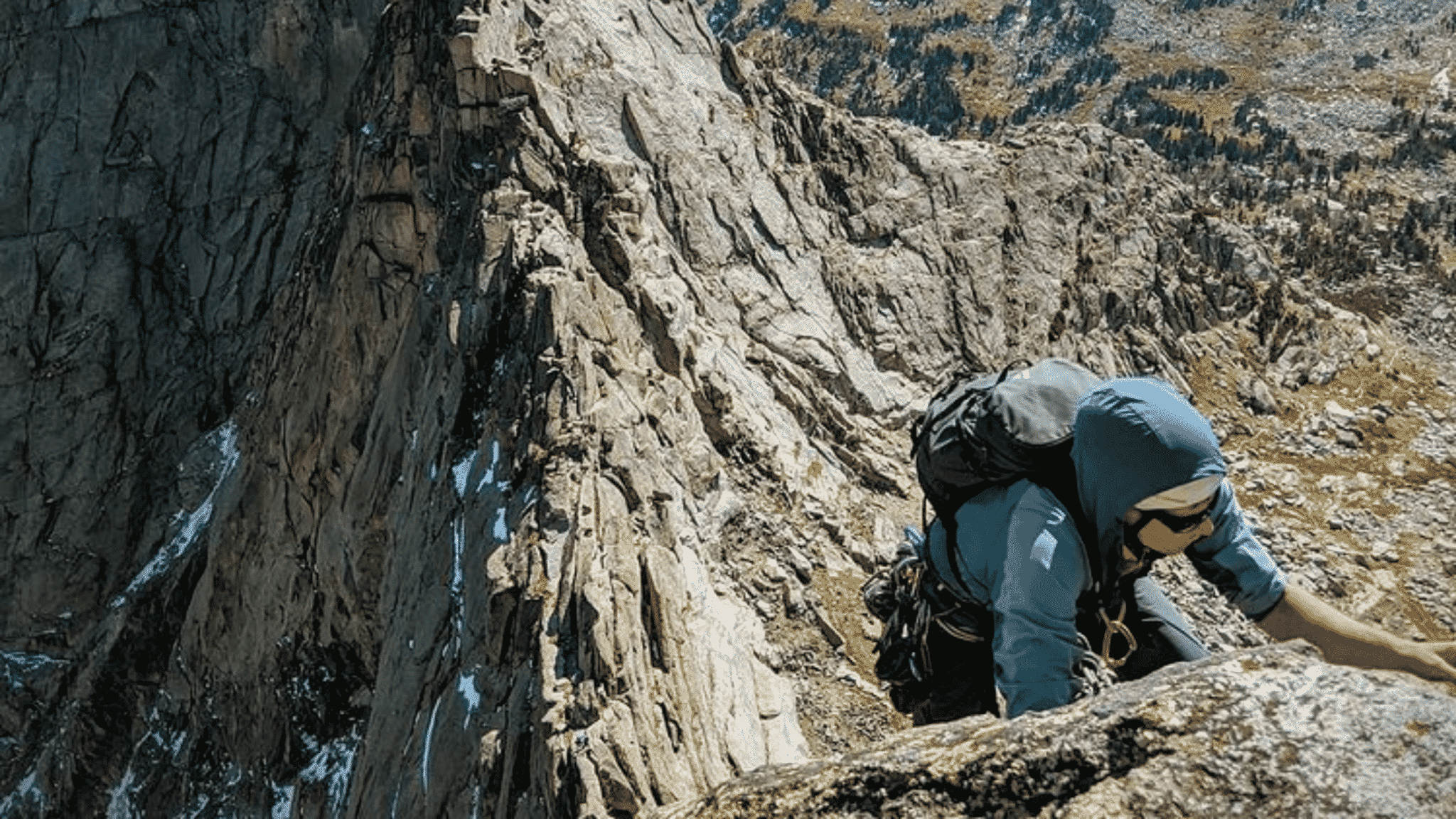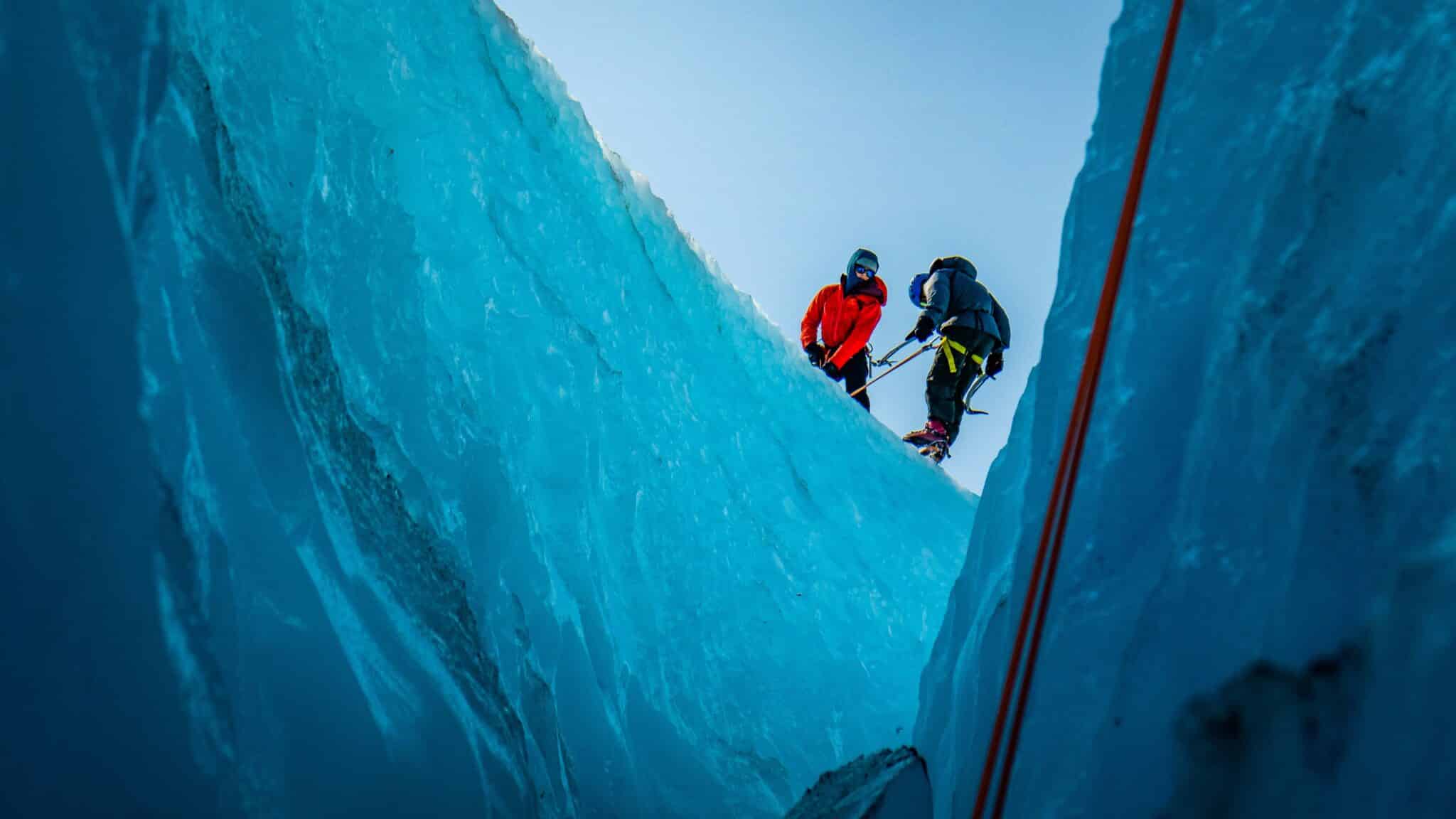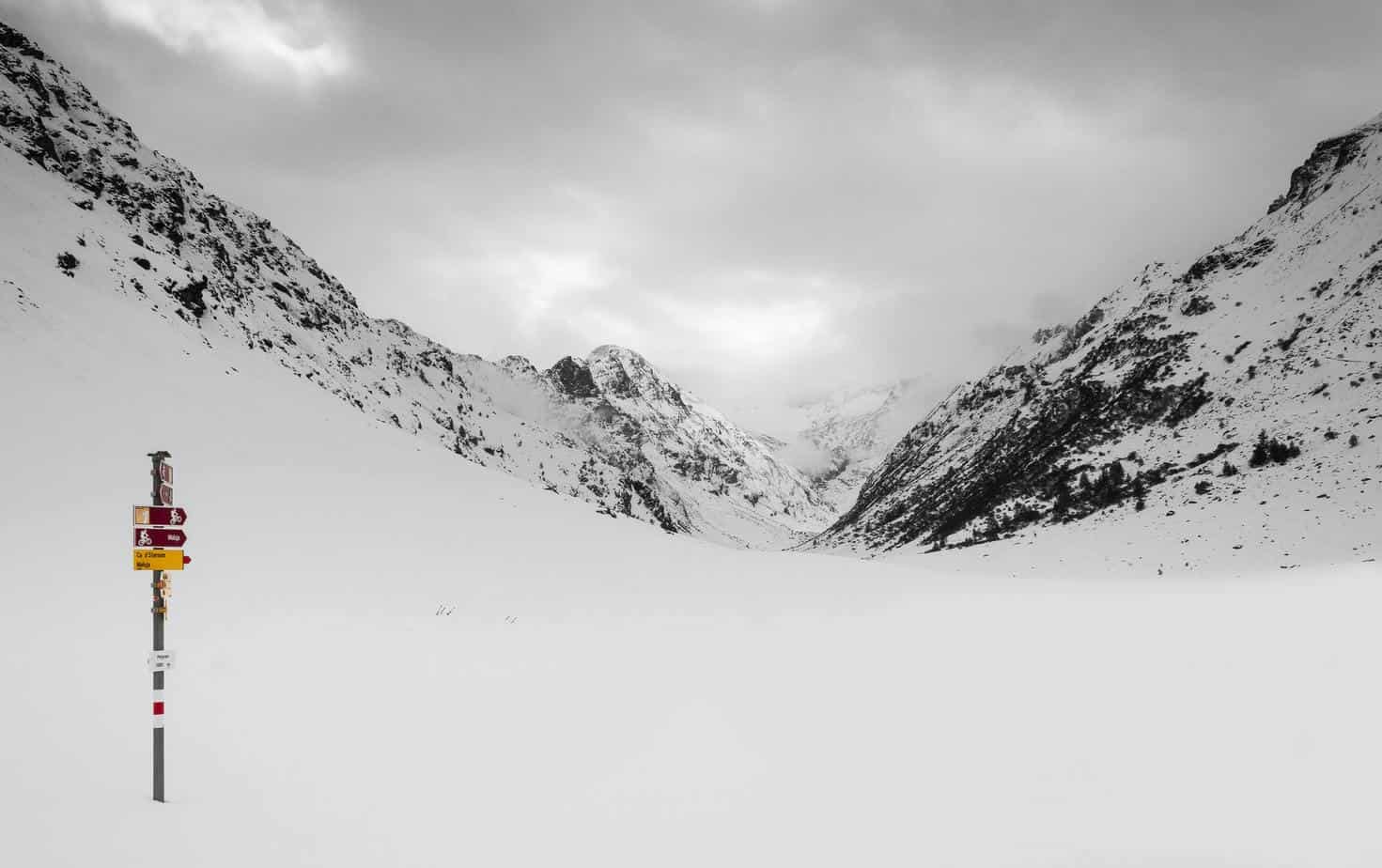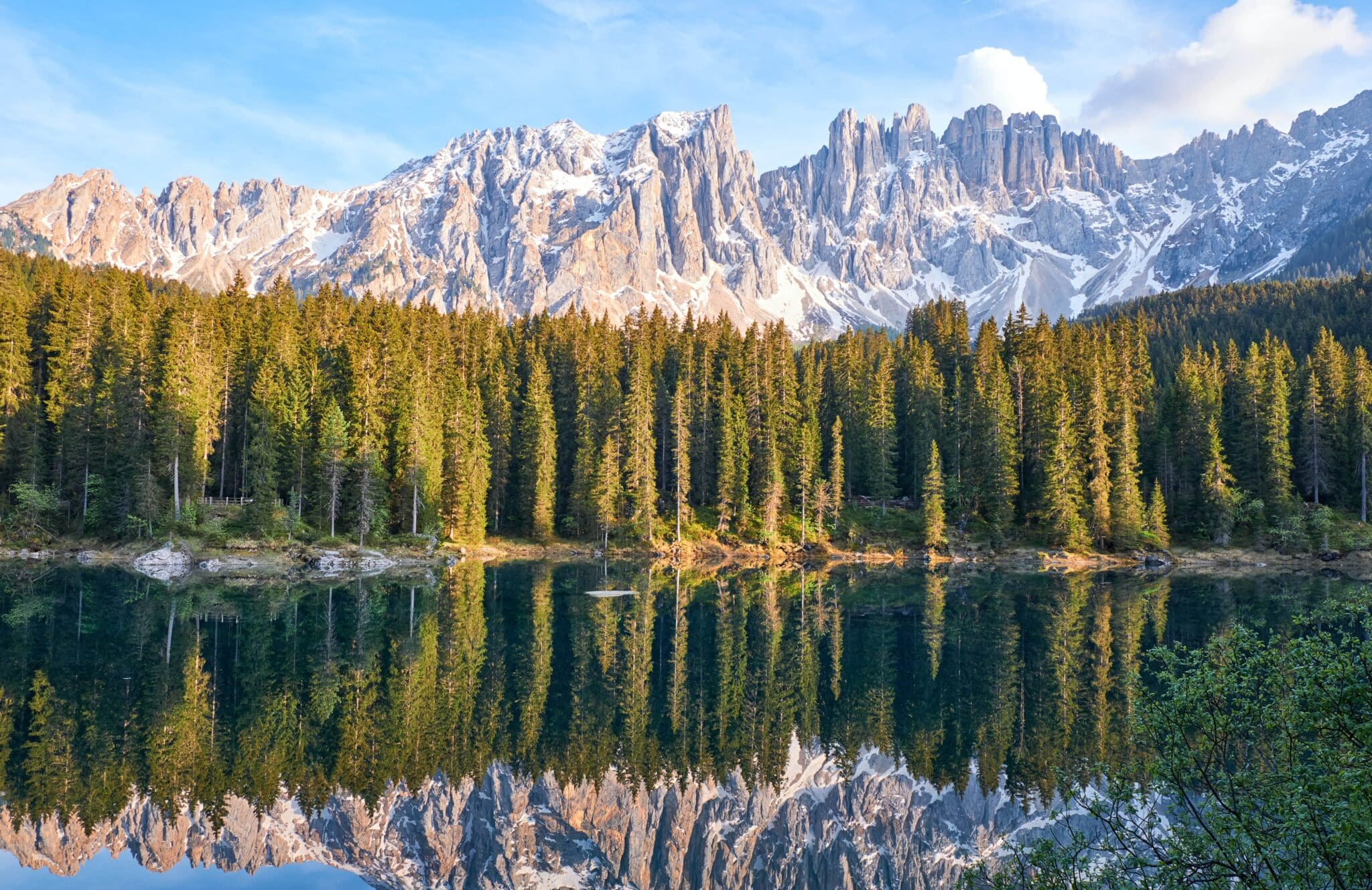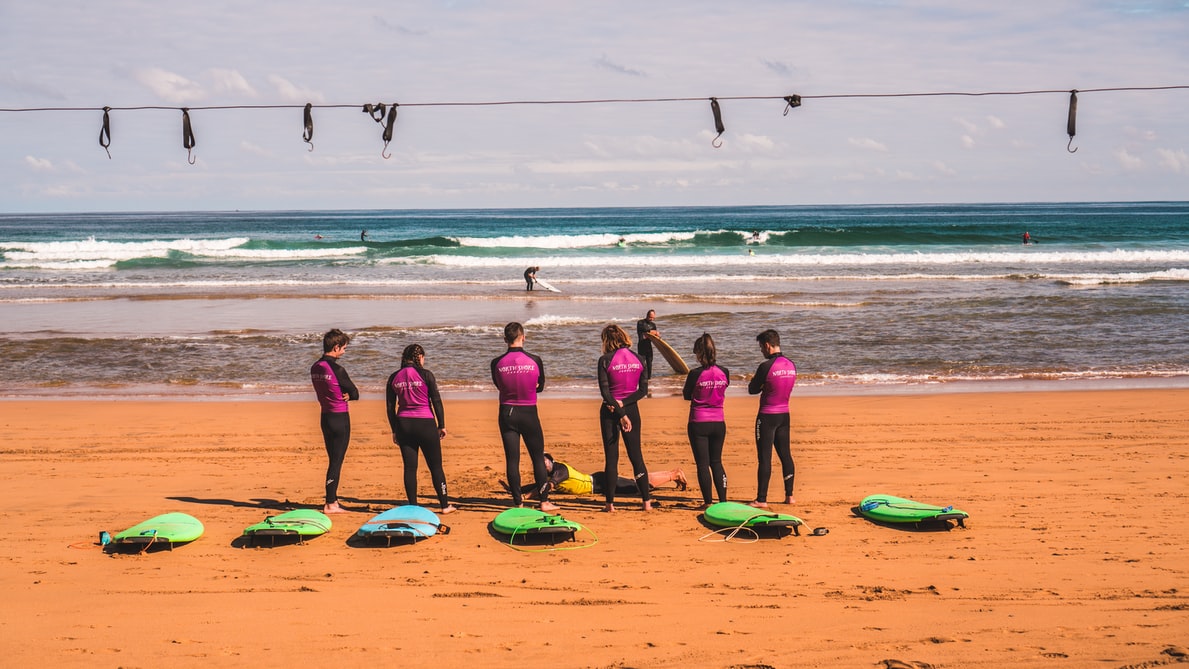As a booking and scheduling platform for the tours and activities industry, we’ve seen our fair share of tourism websites. A lot are still stuck in their original form, from when they were designed in the late 90’s or early 2000’s. Which is fine if that works for them, but it likely isn’t—and they might not realize that.
How To Make A Good Website Design
A good website is one that effectively meets its goals and provides a positive experience for visitors. All the best tourist guide websites have elements that we think make them stand out from the rest. While the specifics vary depending on the kind of website it is and its audience, there are several key elements that contribute to making a tourism website good:
User-Friendly Design
Responsive Design: Your website should be accessible and usable on different devices like mobile phones, tablets, and desktop computers.
Intuitive Navigation: Visitors should be able to easily find the information they’re looking for through a clear and well-organized menu and links.
Readable Font: Use legible fonts, appropriate font sizes, and good contrast between text and background to ensure content is easy to read.
Integrated Scheduling And Booking Widget
Make it easy for visitors to book a trip with you by embedding a scheduling and booking widget on your website that integrates with your guides’ schedules as well.
High-Quality Content:
Relevant and Engaging: Your content should inform visitors, make sense of the website’s purpose, and engage your target audience.
Well-Written: You need to use proper grammar and spelling, and ensure content is free of errors.
Visuals: Make sure to incorporate high-quality images, videos, and other visual elements that make your content come to life.
Fast Loading Speed:
Visitors have little patience for slow websites. Optimize images, use efficient code, and leverage content delivery networks (CDNs) to ensure fast loading times.
Security:
Protect visitor data and website integrity by using HTTPS, keeping software and plugins up-to-date, and implementing strong security measures.
Mobile Optimization:
Given the fact that most people browse websites on their phones, it’s imperative you optimize your website for mobile devices to provide a seamless experience.
Clear Call to Action (CTA):
Tours and activities websites often have specific goals, such as getting visitors to book a tour. Make CTAs prominent, compelling, and clear.
Search Engine Optimization (SEO):
Implement SEO best practices to improve visibility on search engines and make it easier for visitors to find your website.
Accessibility:
Setup your website so that it’s accessible to people with disabilities by following web accessibility standards (e.g., WCAG).
Regular Updates:
Keep your website content and technology up-to-date. Outdated content or features give the impression that the site is no longer active or trustworthy.
Consistent Branding:
Maintain a consistent look and feel across all pages of your website. This includes using a cohesive color scheme, logo, and font.
Fast and Reliable Hosting:
Choose a reliable hosting provider so your website is always accessible and doesn’t experience downtime.
Analytics and Monitoring:
Implement tools to track user behavior, website traffic, and performance metrics, like Google Analytics (it’s free). This data can help you make informed decisions to improve the website.
Contact Form:
Provide a way for visitors to contact you with questions or concerns. Message them back promptly and professionally.
Legal Compliance:
Ensure that your website complies with relevant laws and regulations, such as privacy policies and terms of service agreements.
Social Media Integration:
Make it easy for visitors to share your content on social media platforms and connect with your brand on social media.
Ultimately, a good website is one that does what it’s supposed to: inform and sell tours, while also delivering a positive and seamless experience to visitors. You’ll have to regularly evaluate and improve your website based on feedback and analytics to maintain quality over time.

What Are Good Websites?
We’re judging these tourism websites based on the elements we listed above:
- User-Friendly Design
- Integrated Scheduling And Booking Widget
- High-Quality Content
- Fast Loading Speed
- Security
- Mobile Optimization
- Clear Call to Action (CTA)
- Search Engine Optimization (SEO)
- Accessibility
- Regular Updates
- Consistent Branding
- Fast and Reliable Hosting
- Analytics and Monitoring
- Feedback Mechanism
- Legal Compliance
- Social Media Integration
Alpine To The Max
Alpine to the Max is a premier mountain experience and education provider in Colorado and beyond. Their AMGA-certified climbing guide, Max Lurie, offers customized climbing adventures for all skill levels in rock climbing, ice climbing, and alpine climbing throughout the Colorado Front Range. Whether you’re a first-time climber or a seasoned veteran, Max provides personalized instruction to help you achieve your mountain goals. They tailored their services to fit their clients’ unique objectives and ensure an unforgettable experience.
User-Friendly Design
Alpine To The Max is a good website design example because it’s accessible and usable on mobile phones, tablets, and desktop computers.
The menu at the top of their website makes it super easy to get to where you want to go. Are you interested in rock climbing? Click Rock. Want to get into the Alpine? Click Alpine.
They use legible fonts, font sizes, and you can easily see and read everything. The buttons are orange and stand out from the text.
Integrated Scheduling And Booking Widget
When you click “Book Your Climb Now” in the center of the page or “Book Now” at the top right of the screen, you land on the same page with an integrated booking widget. This makes it easy for their customer to reserve a trip with them.
Within two clicks, their guests will complete their reservation, unlike many other sites these days with (too) many clicks to book.
High-Quality Content
Not only does Alpine To The Max employ a user-friendly design to make it a good website, but it also has high-quality content. They have a blog that’s likely helping them show up higher in search results and their descriptions of trips will convince even the most stubborn and risk-averse to sign up. Plus, they have high-quality and engaging photos that make you feel like you’re there.
Fast Loading Speed/Mobile Optimization
We use Google’s PageSpeed Insights to determine how fast Alpine To The Max’s loading speed is, and they got 94% for Desktop and 49% for Mobile. So, they’re killing it on Desktop but they can use some help on Mobile, namely using different image formats for faster downloads and less data consumption, and eliminating render-blocking resources.
Security
The easiest and most obvious way to tell if a site is secure is by checking the URL to have HTTPS. The ‘S’ means it’s a secure version of the website. Alipine To The Max has this so we can say that it’s a safe website (meaning, your information is unlikely to be stolen).
Clear Call to Action (CTA)
Their CTAs stand out from the rest of their content, which makes them clear and prominent for visitors. When your CTA buttons are buried, visitors are less likely to click them, which will result in fewer bookings.
Search Engine Optimization (SEO)
We ran Alpine To The Max’s website through UberSuggest and their on-page SEO is 80, which is great. Their monthly traffic is around 161 visitors and they can easily boost these numbers by focusing on more keywords they currently rank for and ones they’d like to rank for.
Accessibility
Using accessScan, we saw that Alpine To The Max is semi-compliant in being ADA & WCAG Compliant. So, they could use some help, but it’s fairly good.
Regular Updates
As with any good website design, you need to regularly update your website and it’s clear that Alpine To The Max does this.
Consistent Branding
Their website is consistent throughout with the same color scheme, logo, and fonts.
Fast and Reliable Hosting
We used Hosting Checker to see where their website is hosted and it looks like it’s through Amazon, which is a very reliable network.
Analytics and Monitoring
By inspecting the site and searching “gtag,” we found that Alpine To The Max does have the Google Tag installed, which will help them with analytics.
Feedback Mechanism
They have their email address in the footer, which makes it easier for visitors to message them. They might want to consider adding a chatbot or a clickable link to help folks reach out to them easier.
Legal Compliance
We’re not lawyers, so we can’t say whether they’re legally compliant, but they have links to their Terms & Conditions and Privacy Policy.
Social Media Integration
If having social media followers is important to your tour company, then it’s good practice to incorporate your social media links onto your website. That way, people can click them and hopefully follow you on there too. Alpine To The Max doesn’t link to their social media profiles. Something they might want to consider for the future.
Western Spirit
Western Spirit is a cycling tour company that organizes road, gravel, and mountain biking trips in National Parks, National Forest, and BLM lands. The trips range from mellow family-style outings to 5-day package rides above 10,000 feet on world-class single track.
User-Friendly Design
A good website design for tour operators needs to be responsive, easily navigable, and readable—and Western Spirit meets all three. We’re able to access their site on our phone, tablet, and desktop. With their super clear headers at the top, we know how to find what we’re looking for. Finally, everything is readable. There’s no squinting from behind our bifocals.
Integrated Scheduling And Booking Widget
Western Spirit embedded our scheduling and booking widget which makes it easier for their customers to book a multi-day bike trip without having to fill out page after page of information. That means Western Spirit gets a deposit sooner rather than later and their clients are stoked to have booked a trip in minutes.
High-Quality Content:
Western Spirit uses high-quality images and videos on their website that invoke excitement and just a bit of FOMO to where you really want to book a 3-day trip on the Black Canyon Trail.
Fast Loading Speed/Mobile Optimization:
Using Google’s PageSpeed Insights, it shows Western Spirit’s website is too slow, and they failed the test. They got a 50% performance for desktop and 30% performance for mobile. Not great numbers, but they can fix this. Luckily, Google lists all the opportunities they have to make their site load faster.
Security:
Western Spirit’s URL has the ‘S’ in the HTTP, which makes it a secure website.
Clear Call to Action (CTA):
Their red, “Find the perfect trip” CTA button stands out at the top of the page, which is the perfect spot for a button.
Search Engine Optimization (SEO):
Using UberSuggest, we can see that Western Spirit has an 86 on-page SEO score. Their monthly traffic is 1,552 visitors and they have 3,460 organic keywords.
Accessibility:
Like Alpine To The Max, Western Spirit’s website design is semi-compliant for ADA & WCAG. To help those who are motor impaired, vision impaired, or with cognitive disabilities, there are several suggestions listed on accessScan they can implement.
Regular Updates:
With the number of trips they host, Western Spirit must keep their site up-to-date, otherwise, something could get lost or looked over or forgotten. It’s imperative for them to consistently update their website and it shows.
Consistent Branding:
Western Spirit has a good website design for a tour operator with its fire truck red and the same font throughout the entire site. As you click your way through all the amazing bike adventures they offer, you never think you’ve left their site. Which is how it should be.
Fast and Reliable Hosting:
Sucuri hosts Western Spirit’s site, which looks like a child company to GoDaddy. GoDaddy is another reputable web service, so they likely have few, if any, server crashes.
Analytics and Monitoring:
By “inspecting” the site (right-click with your mouse, then click “Inspect”), we can see they have a Google Tag installed, which means they’re able to track their analytics. With this data, they can make informed decisions on marketing campaigns and further website design.
Contact Form:
At the top of the screen, you can see “CONTACT’ which makes it easy for anyone who visits their site to reach out to them.
Legal Compliance:
Not lawyers, still, but they have a Privacy policy so that’s something.
Social Media Integration:
Finally, a good website practice is to include links to your social media pages, which Western Spirit has done in the footers of every page. This way, if a customer wants to start following them, they can easily click the link.
Aspen Expeditions
Aspen Expeditions is a boutique mountain guide service, where the genuine care and safety of guests is their highest mission. They tailor their guided experiences to meet their clients’ individual expectations and goals. They believe in equitable accessibility into the mountains, which includes growing their women’s programming and promoting their female guides and instructors. Aspen Expeditions seeks to uphold the highest industry standards in training and certification for their skilled and seasoned mountain guides.
User-Friendly Design
A good website design makes navigating the website super easy, and Aspen Expeditions does this pretty well with their Summer, Winter, and Expeditions navigation on the top left. When you click on a link, you can see what kinds of trips they offer during what season.
Integrated Scheduling And Booking Widget
Aspen Expeditions uses Origin’s scheduling and booking widget on their trip pages, which makes it easier for their clients to book short or full trips during the days and times it works for them. And Aspen Expeditions can rest assured that when a client books a date, they have guides ready.
High-Quality Content:
A good website design for tour guides has high-quality content with every bookable trip. That way, when potential clients are browsing through your website, they can imagine themselves taking the trip with you. Aspen Expeditions does this really well in that they have numerous high-quality pictures next to every trip.
Fast Loading Speed/Mobile Optimization:
Aspen Expeditions has passed Google’s PageSpeed Insights with a 96% for mobile and 100% for desktop.
Security:
They got the ol’ “S” in their HTTP, so you know it’s a secure website.
Clear Call to Action (CTA):
While Aspen Expeditions doesn’t have a button at the top of their homepage, they stay consistent in having a “View Trip” CTA throughout the homepage to take customers to specific pages.
Search Engine Optimization (SEO):
According to UberSuggest, their website has 92% on-page SEO score with 3,089 monthly traffic visitors and 2,311 organic keywords. This helps them show up on the first page of Google results when travelers are searching for what they offer.
Accessibility:
Just like Alpine To The Max and Western Spirit, Aspen Expeditions could use more work on their ADA and WCAG compliance, according to accessScan. They’re still semi-compliant. It just needs a bit more TLC.
Regular Updates:
With everything they offer, it’s clear Aspen Expeditions keeps their website up-to-date. From keeping their Guide list updated to making sure all their trips have the most recent information, there’s no reason to think anything is old.
Consistent Branding:
An easy way to implement good website design practices is to have consistent branding and Aspen Expeditions also does this. They use the same font throughout their site, the same colors, and the same high-quality images that accompany trips.
Fast and Reliable Hosting:
Cloudflare hosts Aspen Expeditions’ website, which is a reputable web server, so it’s unlikely Aspen Expeditions will have any outages.
Analytics and Monitoring:
They also have Google Tag installed on their website which means they can track data and make informed marketing and business decisions based on it.
Contact Form:
There’s a “Contact” link at the top of their webpage which lets travelers message, email, call, or follow them on social media. It’s the perfect place to have all of that information.
Legal Compliance:
On the Contact page, Aspen Expeditions also has a link to their policies and liability waiver.
Social Media Integration:
Not only do Aspen Expeditions have links to their Facebook and Instagram pages on their Contact Page, but they them in the footer too. This helps future or interested guests to keep in touch with them.
Alpenglow Expeditions
Alpenglow Expeditions is an international guide service, a leading provider of mountain education, and a global community of adventure seekers. They teach the fundamentals of mountain travel that can lead anyone from their first exploration of rock and snow all the way to the summit of Mount Everest.
User-Friendly Design:
Alpenglow Expeditions’ website design is super easy on the eyes. There’s a calming blue, legible text, and a simple menu on the right. What we especially is the responsive design as you scroll down and the map moves with you. We’re able to access their site on our mobile phones, tablets, and desktops, which makes it easy for users to switch between devices. Plus, it helps that their navigation is intuitive, clearly showing the different trips you can take.
Integrated Scheduling And Booking Widget
Good website design uses embeddable scheduling and booking widgets, not just to make it easy for guests, but it helps your SEO. Unfortunately, Alpenglow Expeditions uses The Flybook, which employs an iFrame with all their trip information inside. We’ve written an entire blog on the negative effects of using an iFrame, such as hindering your organic SEO and adding too many clicks to book a trip.
High-Quality Content:
Alpenglow Expeditions has injected stunning videos and images throughout their website that pull the visitor into the journey. It’s all incredibly engaging and you can’t help but keep scrolling and clicking “play” to watch everything they’ve posted. Plus, they have a Stories section covering expeditions in the field, blogs, and tips and tricks from guides.
Fast Loading Speed/Mobile Optimization:
So, they could do better on their mobile performance, coming in at 55% performance on Google’s PageSpeed Insights and only 69% on desktop. If they implement Google’s suggestions, they’ll get better results in the future.
Security:
Like all the websites before this, Alpenglow Expeditions also has an ‘S’ in their “HTTP” URL, so their site’s secure.
Clear Call to Action (CTA):
Like our friends at Aspen Expeditions, Alpenglow Expeditions website design doesn’t have a clear CTA button at the top of their page that visitors immediately see. It makes sense because they offer so many trips.
Search Engine Optimization (SEO):
While their PageSpeed performance is low, they’re crushing it with SEO, coming in with a 99 on-page SEO score from UberSuggest. They get 7,968 monthly visitors and have 8,525 organic keywords.
Accessibility:
Also like the previous websites, Alpenglow Expeditions are only semi-compliant with ADA and WCAG.
Regular Updates:
It’s obvious they are keeping up with good website design practices because their site looks up-to-date.
Consistent Branding:
Alpenglow Expeditions has consistent colors throughout its website with dark and light blues, the same fun font, and amazing imagery.
Fast and Reliable Hosting:
Cloudflare hosts Alpenglow Expeditions’ website, which is a reputable web server, so it’s unlikely they’ll have any outages.
Analytics and Monitoring:
Like Aspen Expeditions, Western Spirit, and Alpine To The Max, Alpenglow Expeditions has a Google Tag installed so they’re able to monitor metrics which helps them make informed business decisions.
Contact Form:
The great thing about Alpenglow Expedition’s website design is that they have several ways for a customer to contact them. They have a general contact form, emails to specific departments, a phone number, and a chat function. Providing different ways for guests to reach out will give visitors a sense of security and trust with them.
Legal Compliance:
Like Alpine To The Max, Alpenglow Expeditions has a link to its Privacy Policy and Terms and Conditions.
Social Media Integration:
Like any good website design, they also have links to their social media profiles so guests can connect with them on Instagram, Facebook, “X,” and YouTube. This helps grow their community and helps encourage guests to keep coming back.
Jackson Hole Mountain Guides
Jackson Hole Mountain Guides guide the Grand Teton and rock climbing adventures in Grand Teton National Park. They also guide in the Wind River Range, the Beartooths, the City of Rocks, Moab, and Red Rocks.
User-Friendly Design
The navigation at the top of Jackson Hole Mountain Guides’ website makes it clear and easy to get to where you want to go. The Adventures dropdown menu shows you a list of all the adventures they offer and the Education dropdown menu gives you options to take certain classes. Meanwhile, everything’s readable and intuitive.
Integrated Scheduling And Booking Widget
It looks like they have a custom scheduling and booking system and as we clicked our way through the various trips, there seemed to be more inquiry-only options. They may get more bookings with an embedded scheduling and booking widget, but there could be a ton of reasons why they have their system set up as it is right now.
High-Quality Content:
As with all the websites we love, Jackson Hole Mountain Guides has beautiful imagery accompanying all their trips, making it super easy to daydream about a half-day red rock climbing experience when we should be building software.
Fast Loading Speed/Mobile Optimization:
Even though they have a great website design, they could use some help in faster loading and optimizing. Google’s PageSpeed Insights gave Jackson Hole Mountain Guides a 50% performance rating on mobile and 68% on desktop. Looks like they have some work today, but it’s well within their range to fix this.
Security:
And like all the other websites we’ve listed, Jackson Hole Mountain Guides also has a secure website which you can see in the “HTTPS” in the URL.
Clear Call to Action (CTA):
We love their main CTA, “Come Climb With Us.” It’s inviting, fun, and takes you to a list of probably their favorite or most popular trips. Great place to send a first-time visitor.
Search Engine Optimization (SEO):
Their on-page SEO score is 79 which is great. They also get 9,035 visitors per month and have 4,769 organic keywords.
Accessibility:
As with all the other websites, Jackson Hole Mountain Guides is semi-compliant with ADA and WCAG standards.
Regular Updates:
By the modernity of the website and the number of trips they offer, it’s clear Jackson Hole Mountain Guides keep their website up-to-date. This not only helps with SEO but provides visitors with the latest information and prevents any sort of confusion.
Consistent Branding:
It seems a lot of outdoor tour guiding companies love blue and it works. It makes you think outdoors, blue skies, and water. They have a black, blue, and white color scheme throughout the website along with the same font, so it’s consistent and you feel like you’re always on the same company’s website.
Fast and Reliable Hosting:
Cloudflare hosts Jackson Hole Mountain Guides’ website, just like Aspen Expeditions and Alpenglow Expeditions, which is a reputable web server, so it’s unlikely they’ll have any outages.
Analytics and Monitoring:
It’s no surprise to see Jackson Hole Mountain Guides has a Google Tag installed on their website. A guiding business this big would absolutely benefit from Google Analytics for marketing and business planning.
Contact Form:
Similar to Alpenglow Expeditions, Jackson Hole Mountain Guides also has several ways to get in touch with them: a chatbot, social media icons, and a contact button at the top of their page. They have a phone number and a messaging system that provides guests with different ways to get in touch.
Legal Compliance:
They link to their Terms of Privacy which is a great way to stay legally compliant.
Social Media Integration:
Of course, Jackson Hole Mountain Guides has social media links. You can easily click the Facebook or Instagram icons and follow them.
To Wrap Up
We wanted to highlight these tourism websites because they have several key elements that make a good website design for tour operators. These elements include user-friendly design, integrated scheduling and booking widgets, high-quality content, fast loading speed, security, clear call to action (CTA), search engine optimization (SEO), accessibility, regular updates, consistent branding, fast and reliable hosting, analytics and monitoring, feedback mechanisms, legal compliance, and social media integration.
Each of the adventure guide websites has varying degrees of adherence to these website design principles. Some excelled in certain areas, while others showed room for improvement. However, all of them share the common goal of providing a positive and seamless experience to their visitors, regardless of the adventure they are seeking.
Finally, website design is an ongoing process, and continuous evaluation and improvement are essential to maintaining a high level of quality over time. As the tourism industry evolves and online travelers’ expectations change, websites have to adapt to meet the needs of their target audience. By prioritizing these key elements and staying responsive to user feedback and analytics, these tour operators will continue to thrive in the digital landscape and provide exceptional experiences to their customers.


